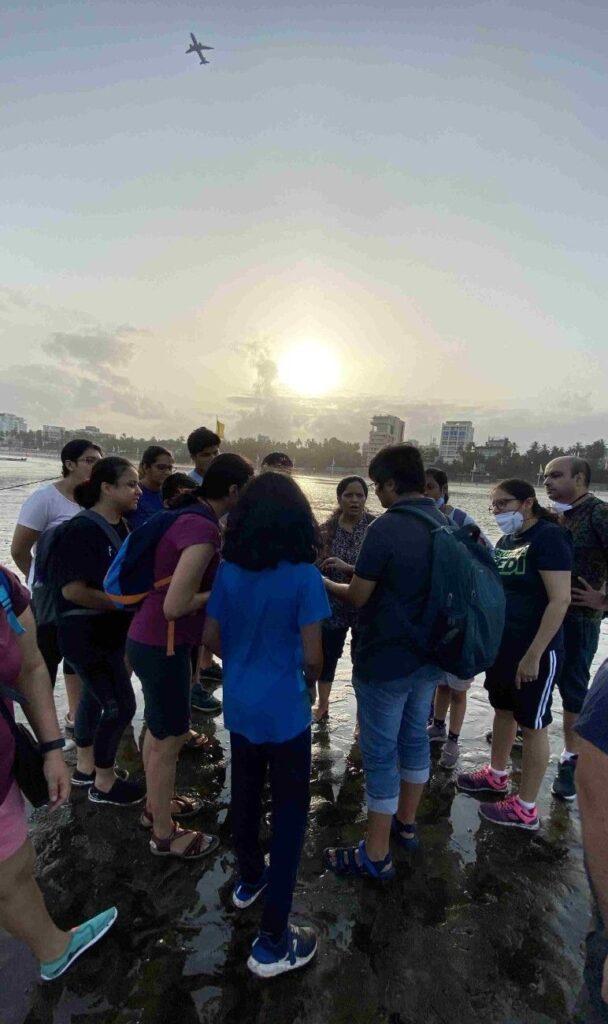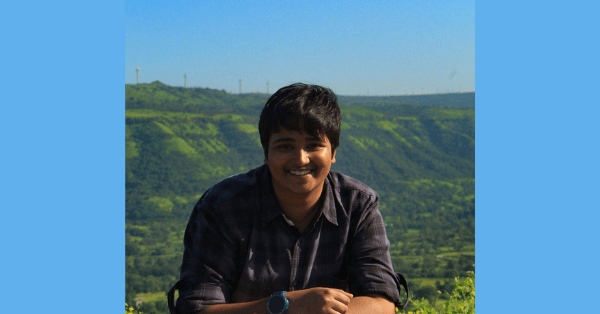Meet an Educator is a monthly series by Early Bird, where we feature the work of educators across India who are actively spreading the joy of birds and nature. This month’s featured educator is Chahat Yadav, a nature educator based in Mumbai, whose work focuses on the city’s fascinating intertidal and wetland ecosystems.
Do tell us about yourself, where you are from, and your work
Hi! I am Chahat Yadav, a Zoology postgraduate and nature educator based in Mumbai. My work revolves around the fascinating intertidal and wetland ecosystems of this city, places I have come to know and love over the past five years. It all started with an internship at NaturalisT Foundation, followed by an enriching experience with Naturalist Explorers, where I began leading nature trails and collaborating with other like-minded organisations. What began as fieldwork slowly grew into something bigger, a blend of education, planning, and building connections with people and places. I now continue my journey as a nature educator and freelance project manager with the same team. Whether I am out with a group spotting tiny creatures by the shore or working behind the scenes. I find so much joy in bringing people closer to the wild side of their everyday surroundings.
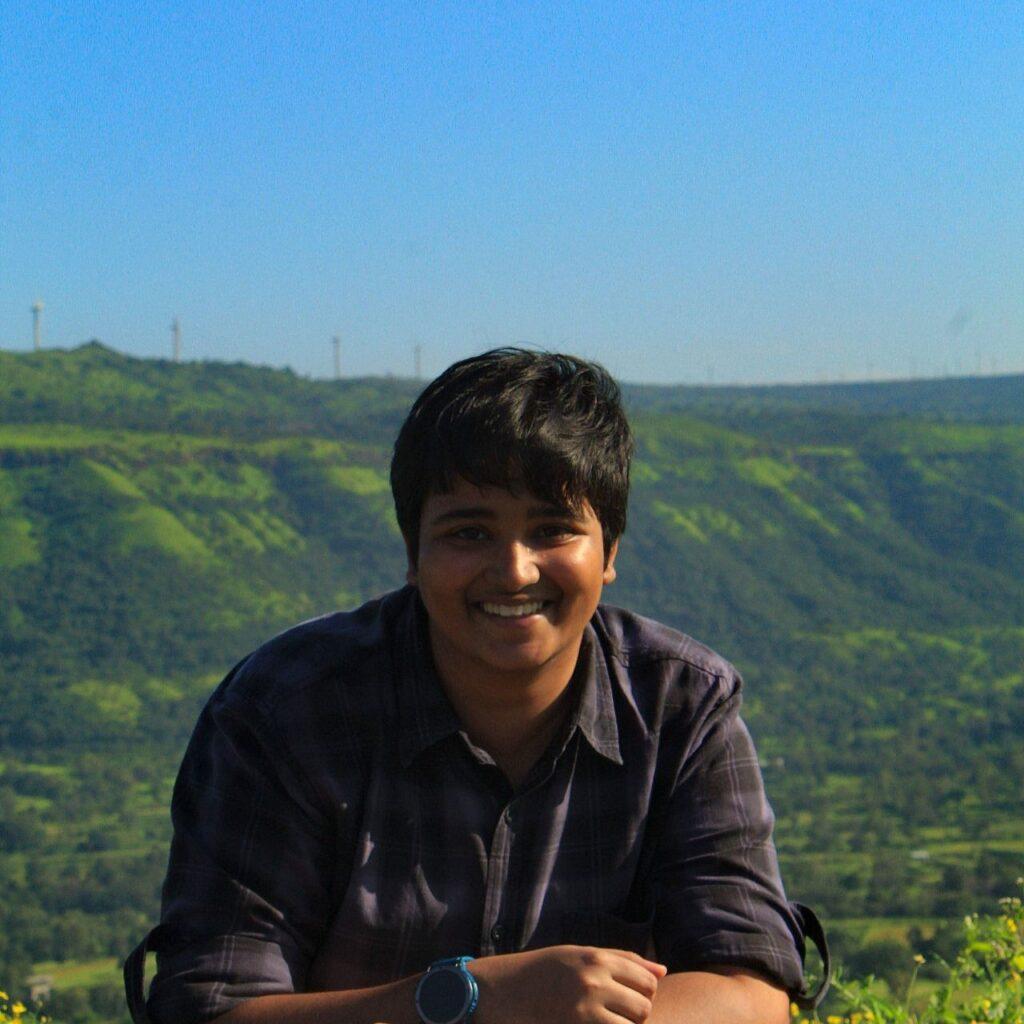
Photo Credit: Prajval Kadam
What excites you about the natural world?
One of the most exciting things I love about nature is watching how organisms interact with each other and with their surroundings. It’s like a giant, unscripted play unfolding right in front of you. I especially enjoy the thrill of searching for life, like playing hide and seek with tiny creatures that blend into their habitats. No matter where I go, my eyes are always scanning, hoping to spot something unexpected. Some of my all-time favourite encounters include spotting a vibrant red-coloured octopus on the shore and finding delicate, jewel-toned sea slugs right here in Mumbai. Moments like these never get old. Even now, every time I step onto the shore, I feel that same childlike joy and wonder, as if I am seeing it all for the first time. It’s humbling and magical to witness how resilient and full of surprises marine life can be, especially in a city like ours.
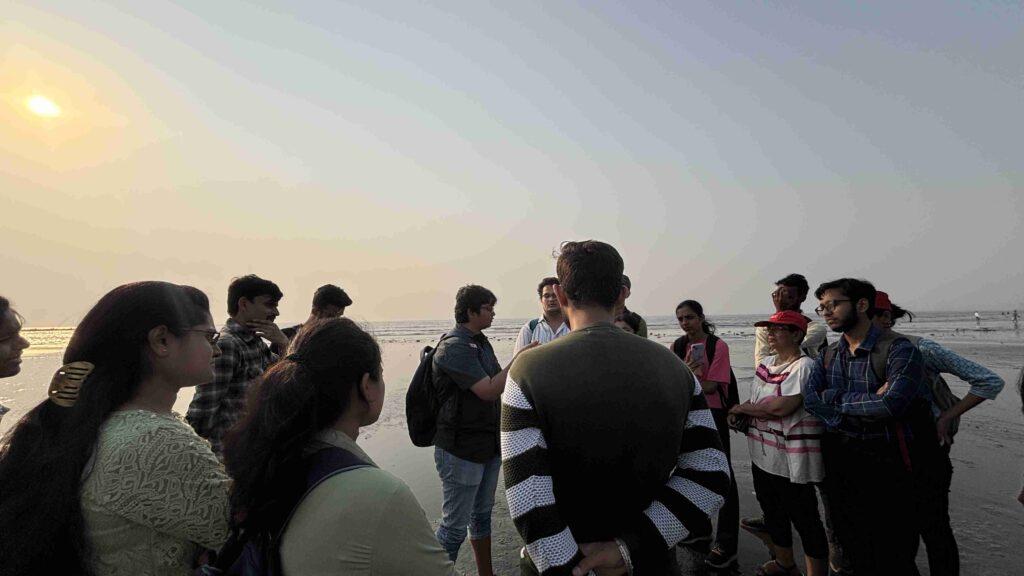
Photo credit: Priyal Soni
When and how did you get interested in bird/nature education?
Growing up in Mumbai, I never imagined this bustling city had space for wild nature until I joined a shore walk at Juhu Beach led by a fellow nature educator. That one walk completely shifted my perspective. I was amazed to discover that, even in the middle of all the chaos, marine life quietly thrives. It got me curious. I began exploring the shores on my own, eager to see more. Then came the moment it sealed for me. I stumbled upon a Bamboo Shark washed up on the beach. It was unfortunate to see it lifeless, but also incredible. I couldn’t believe I was looking at a shark, right here in Mumbai! That day, I knew this was where I truly belonged, by the sea, learning, exploring, and sharing these hidden wonders with others.
What do you hope to achieve through your education work?
There are two things I hope to achieve through my work, one’s a little silly, the other more serious. Let’s start with the serious bit: I want people to see just how beautiful, surprising, and sometimes wonderfully odd the natural world can be. Even in a city as crowded as Mumbai, nature is quietly thriving in the most unexpected corners. But with rapid and often careless development, many green and “empty” spaces are dismissed as wasteland. That mindset needs to change. It’s more important than ever for citizens to speak up for sustainable development and protect the habitats we still have. Now for the silly bit: I absolutely love watching people’s eyes light up when they see something wild for the first time. That look of awe, of childlike wonder, reminds me of how I felt, and still, whenever I discover something new. If I can spark even a little bit of that joy in someone else, I feel like I have done something right.
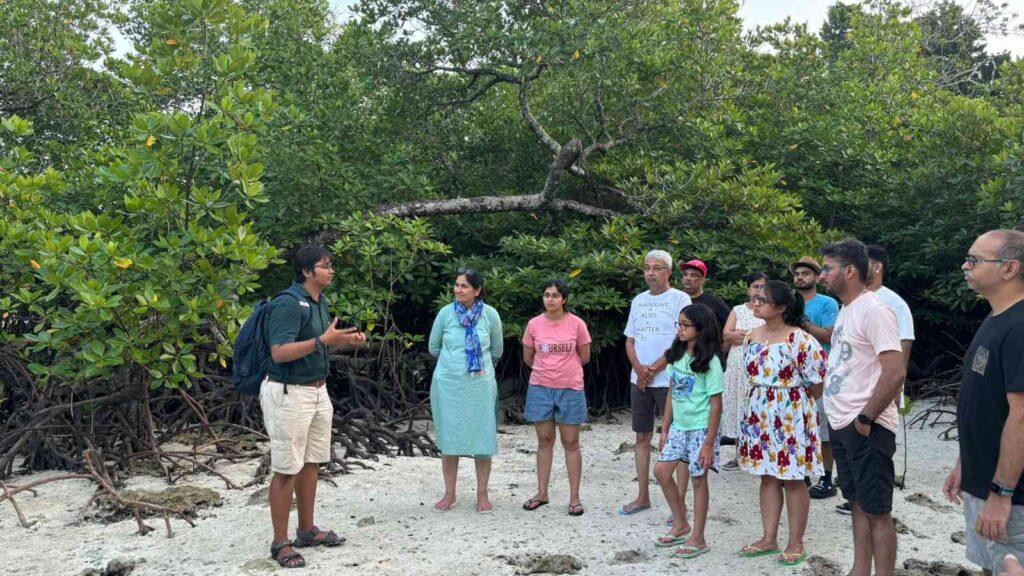
Why do you believe it is important for children to learn about birds or connect with nature?
Children are the future stewards of our planet, the ones who will speak for nature when it cannot speak for itself. In today’s world, where development often takes centre stage, nature is sadly pushed to the background. As a result, many children grow up surrounded by concrete, with little to no connection to green spaces. But nature offers more than just beauty; it helps nurture values like compassion, empathy, patience, and kindness. These are lessons no textbooks can fully teach. Spending time in nature also brings something kids need most, joy. Whether it’s splashing in a stream, running across a forest trail, or quietly observing a butterfly, every moment outdoors sparks curiosity and awakens their senses. It’s not just about learning the names of trees or animals – it’s about feeling connected to something bigger. Even if they don’t realise it, children grow through these simple, playful moments in nature. And that connection can stay with them for life, shaping not just how they see the world, but how they choose to care for it.
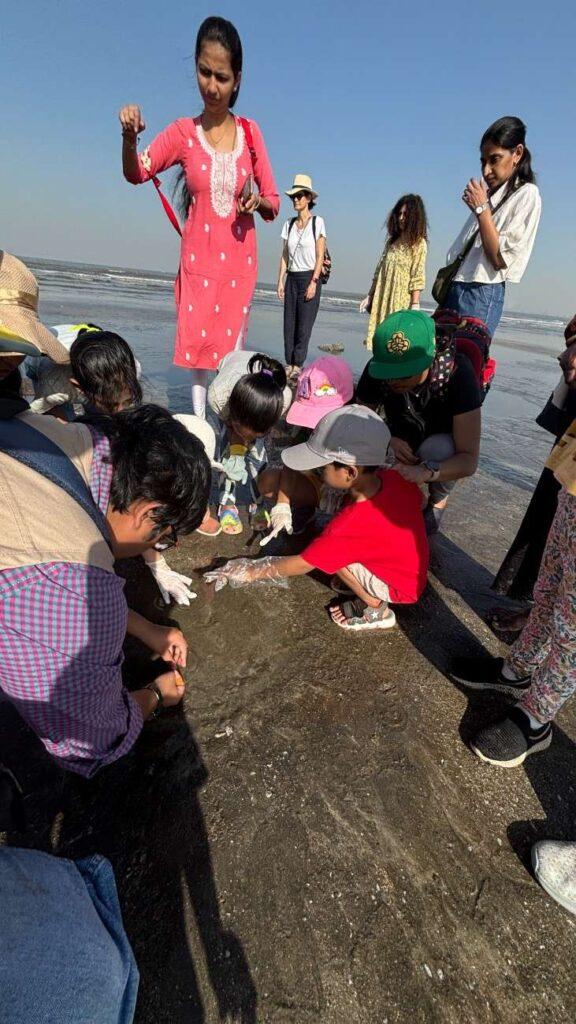
What tools or resources have helped you in teaching about birds? Can you describe an approach that has worked exceptionally well for you?
Ah, this is one of my favourite parts, talking about nature in nature! For me, it’s all about how I share those stories and moments. I often begin by asking people what they can spot around them, and sometimes it turns into a fun challenge of counting how many creatures they see. I also love giving them something to interact with, like feeling the texture of an empty seashell or quietly observing the quirky behaviour of hermit crabs. Tidepools are usually a hit, especially when hermit crabs start dashing around or when chaos breaks out among the other crabs! During the indoor session, I mix things up with presentations, videos, and a lot of photos to keep the energy alive. When we talk about birds, flamingos, in particular, I sometimes mimic their walks or gestures, which usually gets everyone laughing and more engaged. As for resources, I like to dig into recent research papers and scientific books, especially when I want to understand animal physiology and create fun little facts around them. iNaturalist is one of my go-to platforms for taxonomy and species ID, and I also use several online biodiversity portals to stay updated. For me, whether it’s indoors or outdoors, the goal is the same: to help people feel nature, not just learn about it.
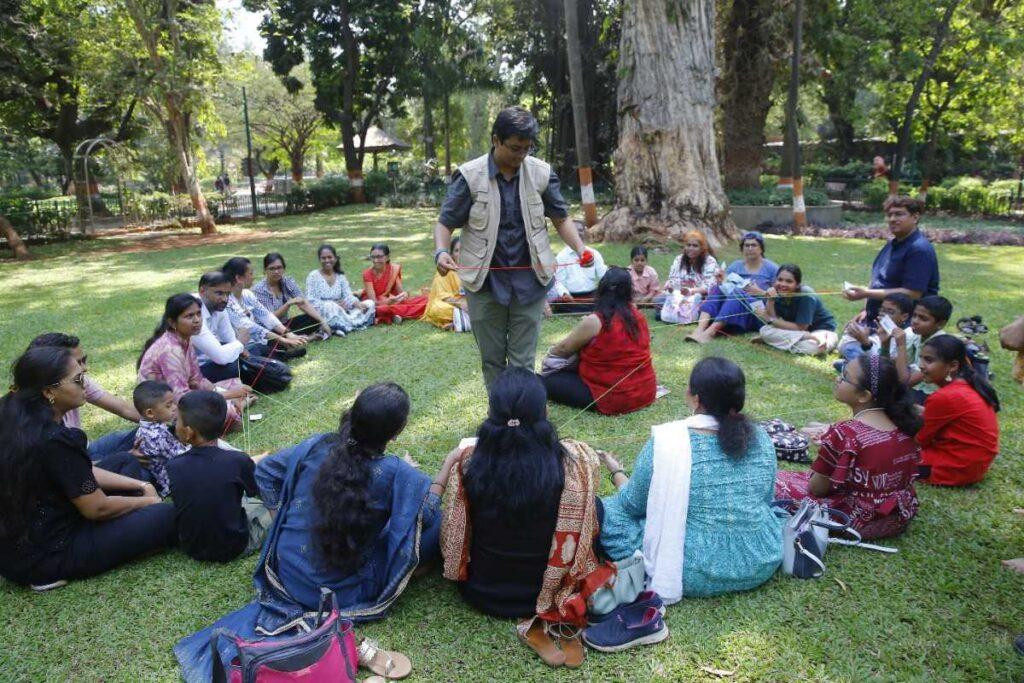
Have you encountered a significant challenge as a bird/nature educator, how did you overcome it?
One of the biggest challenges I often face is navigating cooperation with different authorities. There is always an underlying concern about being stopped, questioned, or even viewed as suspicious while conducting an outdoor session, especially in public or lesser-known spaces. The process of obtaining permissions is often slowed down by bureaucracy and can be quite stressful, even when intentions are clearly educational. Whenever I am approached by officials, I do my best to calmly explain the nature of the activity, reassure them that the group is under my care, and emphasise that safety is always a top priority. While most situations eventually de-escalate, the uncertainty still adds a layer of stress to each session. Another challenge I faced early on was being too technical, particularly when I would get excited about taxonomy or species traits. While that level of detail fascinated me, I realised it could sometimes overwhelm my audience. Over time, I learned to simplify the language, turning scientific facts into engaging questions or fun facts that spark curiosity. Now, instead of rattling off Latin names, I use them as conversation starters to showcase how diverse and fascinating our biodiversity truly is. These challenges have taught me to be flexible, patient, and more creative in how I communicate — qualities that I have come to value deeply in this field.
Do share any memorable moment or experience you have had in teaching kids about birds/nature. Can you recall any insightful instance that shaped your perspective?
Some of my most cherished moments come from interacting with children during nature trails. I have had kids run up to me, holding out seashells and asking, “What is this one?”, each shell sparking a sense of wonder and curiosity. Some are simply fascinated by shapes, colours, and patterns. I love seeing how something so small can light up their faces. When it comes to bird behaviour, especially flamingos, it’s always a hit. I remember one trail where, after showing how flamingos stand, move or do courtship dance, the kids broke into a friendly competition- balancing on one leg, flapping their arms, or spinning in circles with laughter. It turned into a spontaneous, flamingo-inspired dance-off! During indoor sessions, too, the energy is no less. Kids often come up with the most creative stories, thought-provoking questions, and fresh perspectives. I find myself completely absorbed, listening to each one, surprised at how imaginative and insightful they can be. Spending time with children in this setting has been a beautiful reminder to stay present, to remain curious, and to never lose that playful, goofy side of ourselves. Their joy, honesty, and eagerness to learn are what keep me going and make every session feel new.
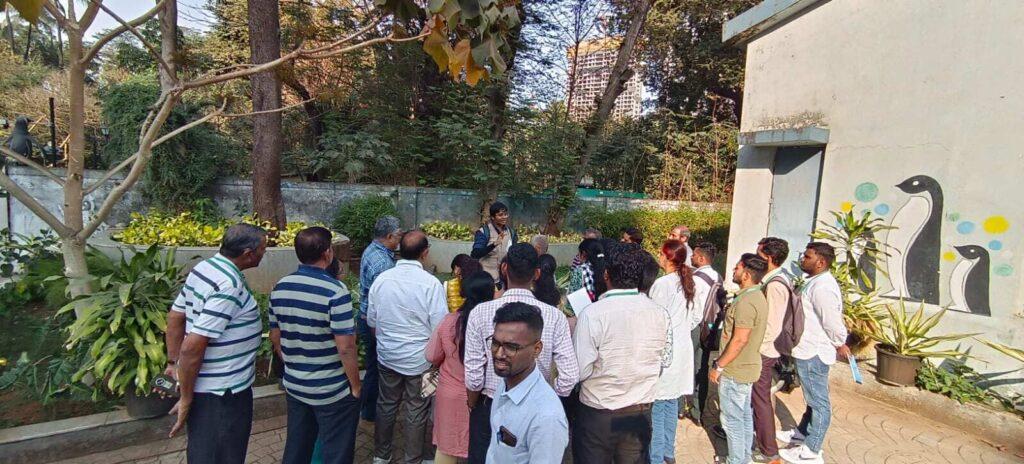
Photo credit: Rupesh Poojari
Have you noticed any changes in your learners after they received exposure to birds and nature-based learning? If yes, what are they? If not, why do you think that is?
One of the most heartwarming parts of my work is seeing how children stay curious even after a nature trail ends. Right after the trail, many of them excitedly share what they saw or how they felt, whether it was spotting a crab for the first time or seeing a bird they would never have noticed before. When I say goodbye, I often glance back, only to find them already scanning the ground, searching for more creatures. That quiet moment always stays with me. Sometimes, a day or two later, I receive messages from parents, photos of their kids pointing out insects, shells, or birds they came across on their own. A few even send drawings, handmade models, or short poems inspired by what they experienced during the trail. Each creation feels like a small celebration of nature through their eyes. Moments like these remind me why I do what I do. Knowing that I have sparked even a little curiosity or wonder in someone, especially a child, fills me with joy. It’s these simple, genuine responses that reassure me that I have made a difference, however small, and that feeling is truly priceless.
What message would you have for your fellow educators, or somebody starting out in their nature education journey?
For anyone starting, it is completely okay to miss a few facts, stumble while speaking, or not have all the answers. Don’t be too hard on yourself. What truly matters in your passion is shown in the way you speak, the way you observe, and in your curiosity. And that passion is what people remember. So, take a deep breath, keep learning, and just keep going. To my fellow educators and myself, too, I know there are days when it feels we are not doing enough, or that our efforts may not be making a difference. On those days, hold on to this: someone, somewhere, looked up to you, smiled because of you, or saw nature a little differently because of your presence. That has quite an impact matter. So don’t give up, keep moving forward, one trail, one moment, one conversation at a time.
